Gold prices hit record high above $3,600/oz on rate cut bets, haven appeal
Introduction & Market Context
Paladin Energy Ltd (ASX:PDN) released its March 2025 quarter presentation on April 23, highlighting a 17% increase in uranium production at its flagship Langer Heinrich Mine (LHM) in Namibia, despite facing significant weather-related challenges. The company continues to benefit from strong uranium market fundamentals, with spot prices up 139% and term prices up 158% over the last five years.
The uranium producer reported cash and short-term investments of US$127.8 million as of March 31, 2025, while advancing its growth pipeline across Namibia, Canada, and Australia. The company’s stock closed at $3.98 on April 22, near its 52-week low of $3.93, despite operational improvements.
Quarterly Performance Highlights
Paladin reported production of 745,484 pounds of U3O8 at LHM for the March quarter, representing a 17% increase from the previous quarter and bringing the financial year-to-date production to over 2 million pounds. Sales volumes of 872,435 pounds exceeded production during the quarter, with an average realized price of US$69.9 per pound against a production cost of US$40.6 per pound.
The company processed over 900,000 tonnes of ore in the quarter, achieving the highest throughput since operations restarted. The average plant recovery rate remained stable at 88%, in line with target recovery rates.
As shown in the following production and sales performance chart:
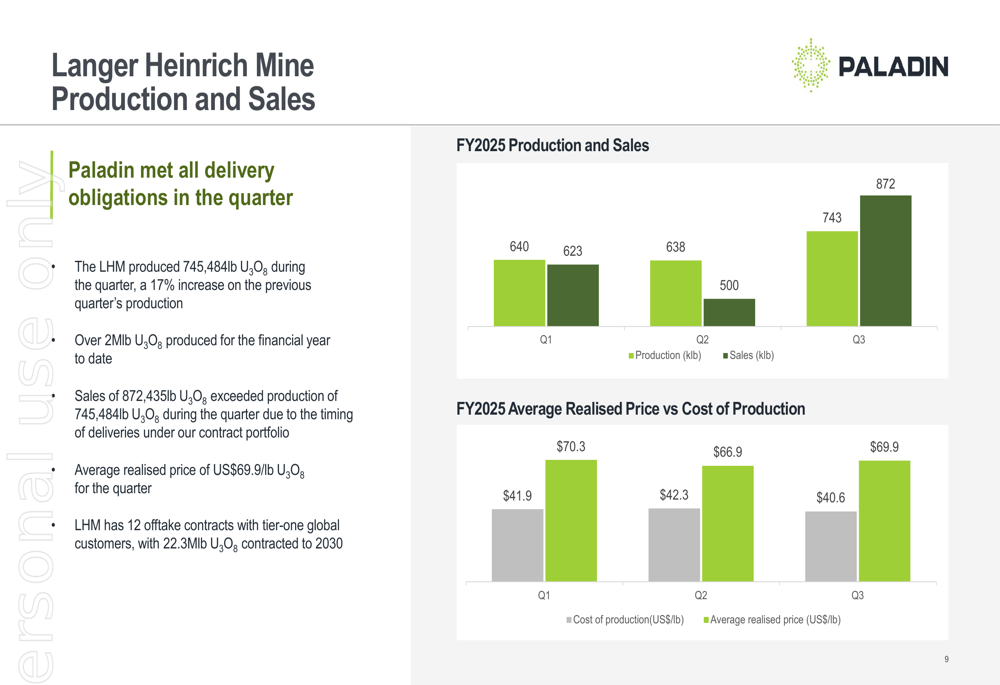
Financial results showed the company’s cash position decreased by US$38 million during the quarter to US$127.8 million. Paladin made its first scheduled repayment of US$6.75 million on its US$100 million Term Facility during the quarter.
The following cash flow chart illustrates the company’s financial movements over the past six months:
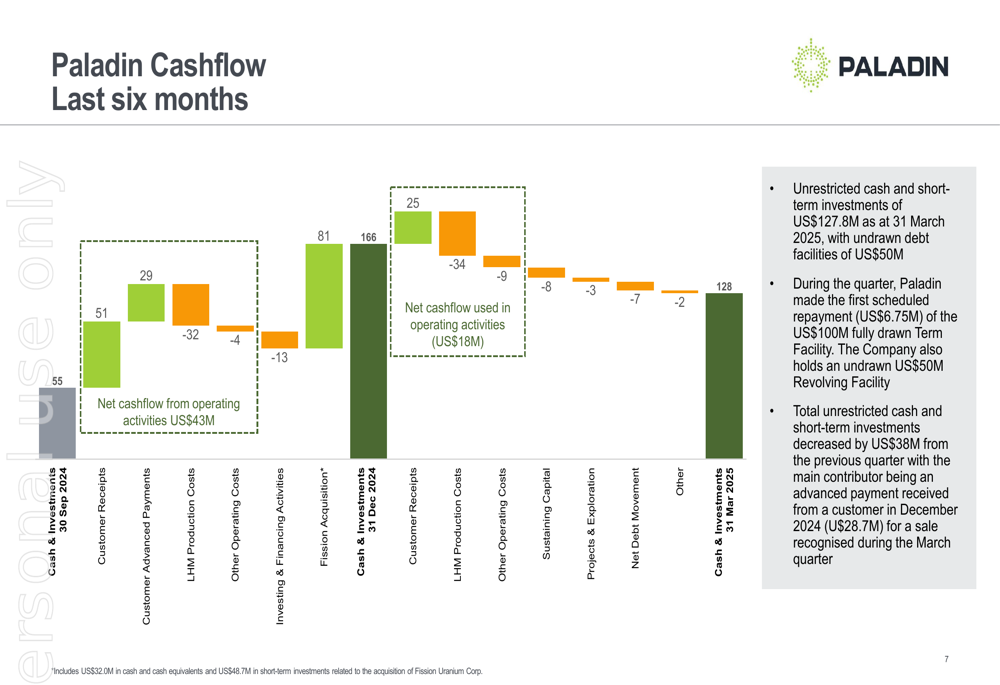
Operational Updates
The Langer Heinrich Mine faced significant challenges during the quarter due to what the company described as a "one-in-fifty-year rainfall" event in March. The weather event caused suspension of operations, saturation of stockpiles, impacts on processing plant chemistry, flooding in the pit, and damage to local infrastructure. Despite these challenges, the company reported no significant damage to the processing plant, and operations have safely resumed.
A key milestone during the quarter was the commencement of mining activities at LHM. While mining was initially planned for pit G3A within the G-pit, an alternative pit (G2A) was identified for the start of mining operations, with initial blasting occurring successfully in April.
The following image shows the processing plant performance metrics:

Development Pipeline
Paladin continues to advance its growth pipeline, particularly the Patterson Lake South (PLS) project in Canada. The company reported two significant developments for PLS during the quarter: an exemption granted by the Canadian Government from the Non-Resident Ownership Policy and the signing of two Mutual Benefits Agreements with Indigenous peoples (the Buffalo River Dene Nation and the Clearwater River Dene Nation).
The company’s global production and development pipeline spans multiple jurisdictions:
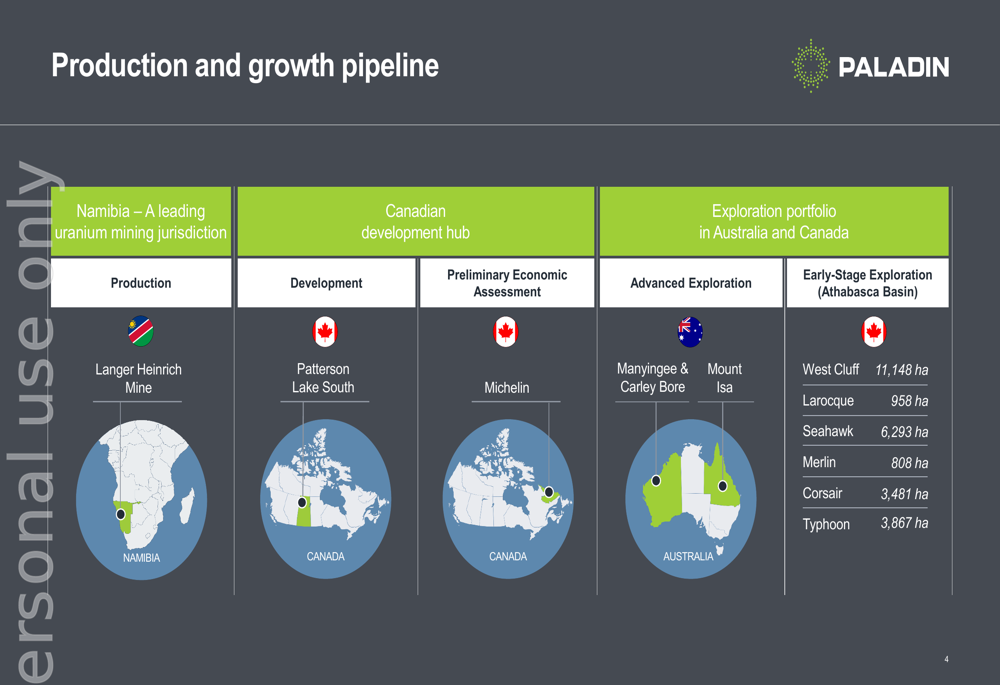
Winter drilling programs progressed at both the PLS project and the Michelin (EPA:MICP) project, with results from the Michelin winter program to be used for planning the summer drilling campaign.
Market Outlook & Strategy
Paladin highlighted strong uranium market fundamentals supporting its growth strategy. The company noted that utilities have sourced on average over 90% of uranium via term contracts in the last three years, though contracted activity remains below replacement levels. Global nuclear utilities have uncovered uranium requirements over the next decade, which is expected to drive term activity and uranium pricing.
The following chart illustrates uranium market pricing trends:
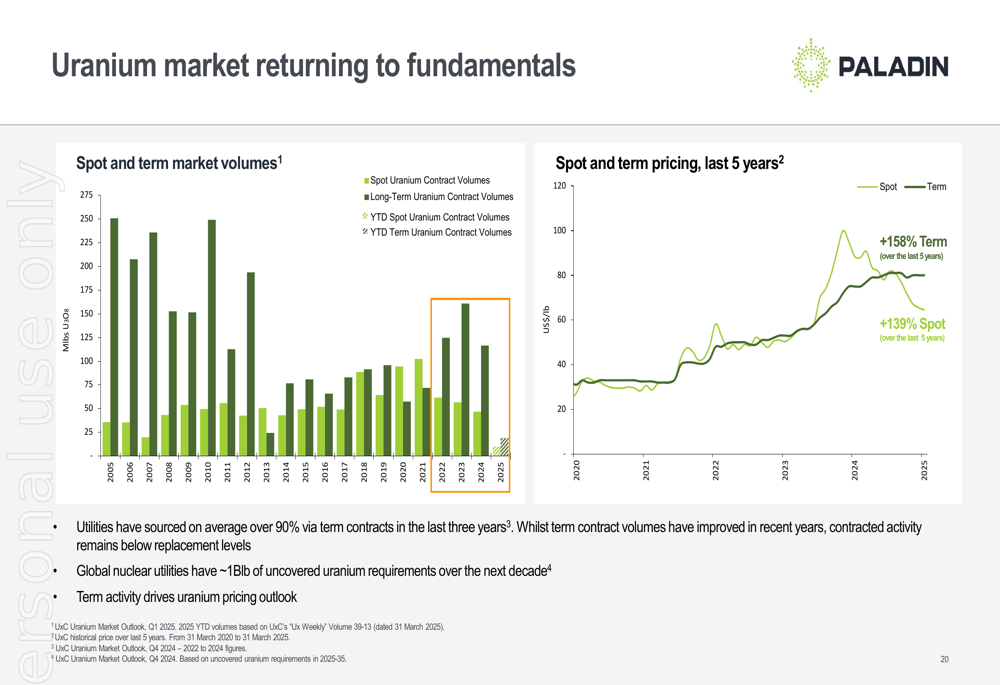
Paladin’s contract book includes 12 offtakes with tier-one industry counterparties, representing 22.3 million pounds of U3O8 contracted through 2030. The company’s customers account for over 40% of global uranium reactor requirements. The contract book is diversified geographically (Europe 23%, Asia 45%, US 32%) and by pricing mechanism (market-related prices 58%, base-escalated & fixed prices 42%).
The company’s contract book breakdown is illustrated here:
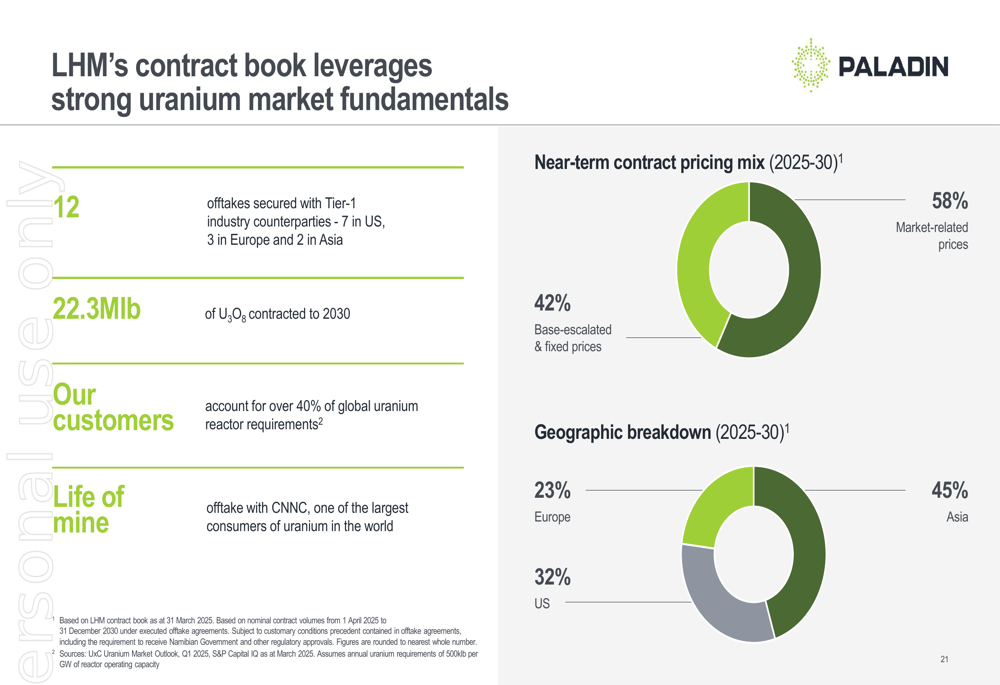
Strategic Initiatives
Paladin outlined its strategy to deliver sustainable value by focusing on four key areas: the return of Langer Heinrich Mine to production, growth via M&A (exemplified by the Fission Uranium Corp (TSX:FCU) acquisition), delivering development and exploration potential, and embedding sustainable returns.
The company’s strategic roadmap is visualized as follows:
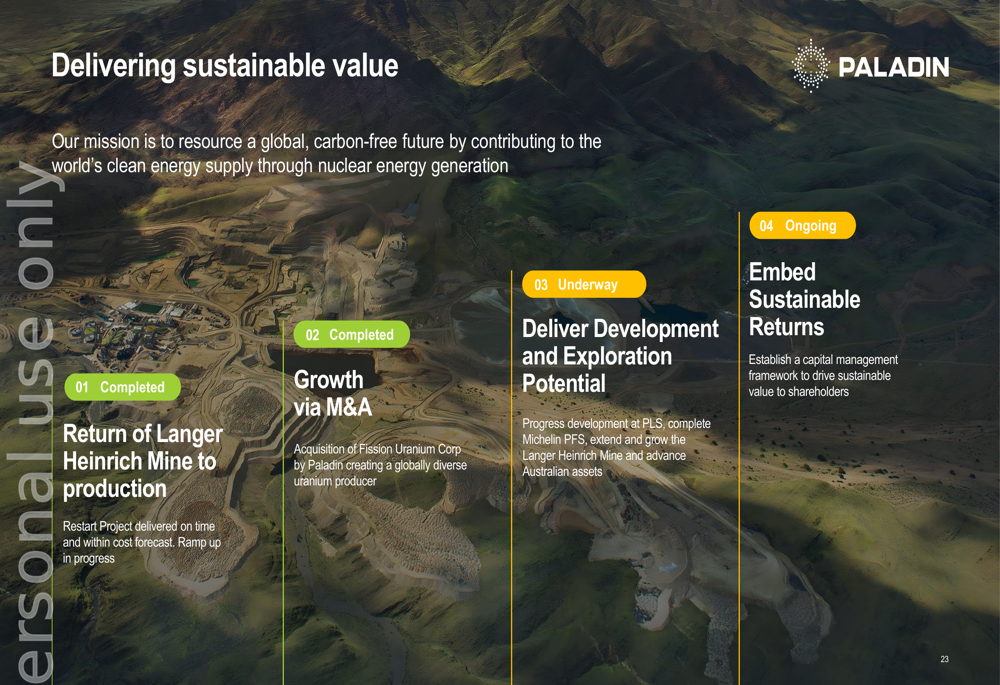
Forward-Looking Statements
Looking ahead, Paladin remains focused on optimizing operations at Langer Heinrich, advancing its development projects, and capitalizing on favorable uranium market conditions. The company’s near-term priorities include ramping up mining activities at LHM, progressing the environmental impact assessment for the PLS project, and continuing exploration activities across its portfolio.
With a diverse project pipeline spanning production, development, and exploration assets, Paladin is positioning itself to benefit from the growing global demand for uranium as nuclear energy plays an increasingly important role in the transition to clean energy sources.
Full presentation:
This article was generated with the support of AI and reviewed by an editor. For more information see our T&C.
